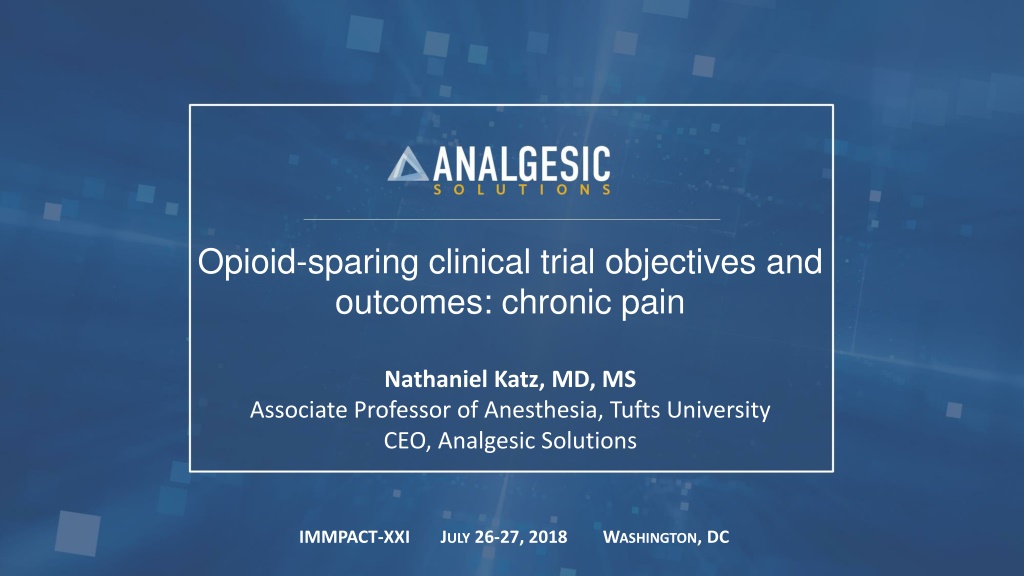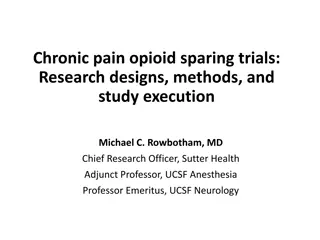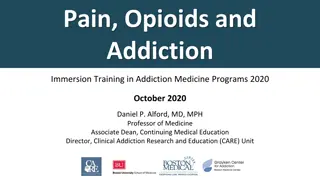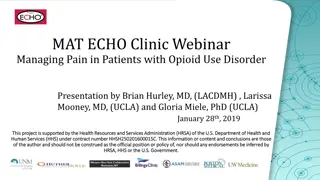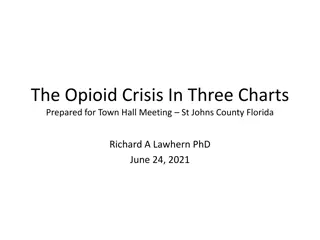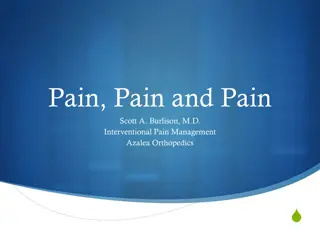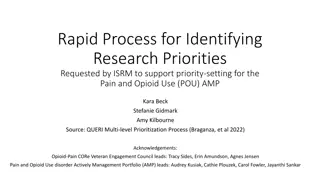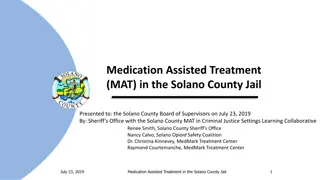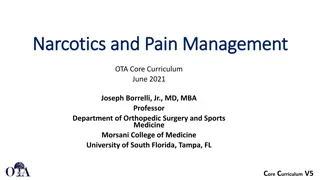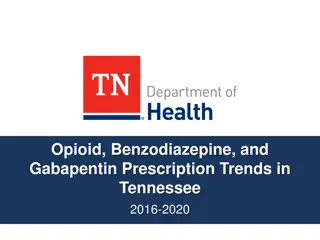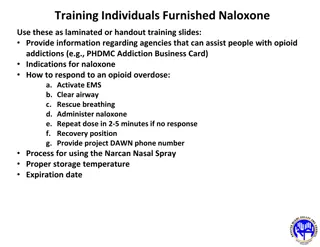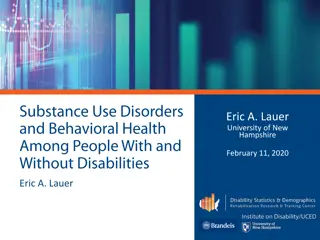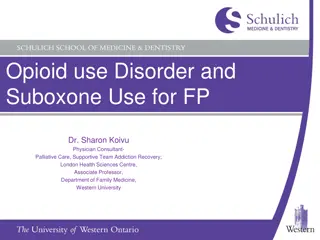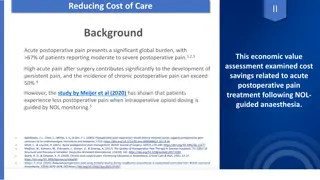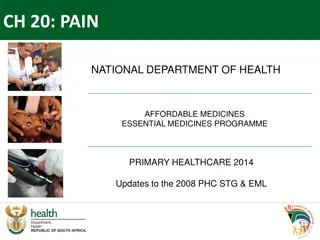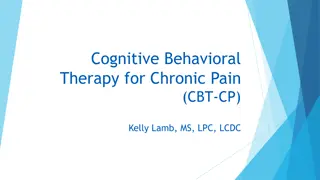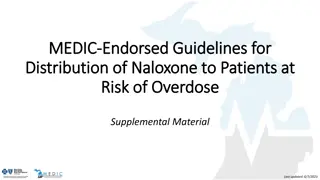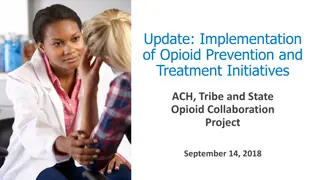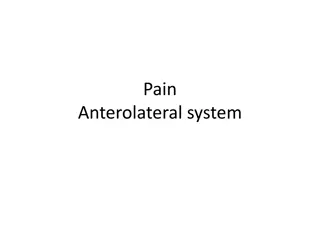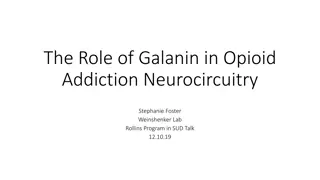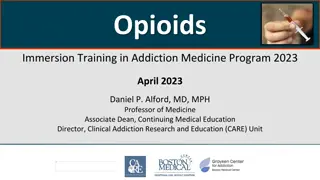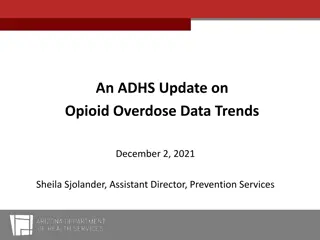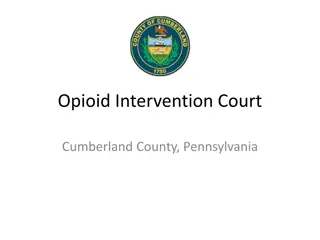Understanding Opioid-Sparing Strategies for Chronic Pain Management
In this detailed presentation by Nathaniel Katz, MD, MS, the concept of opioid-sparing strategies in chronic pain management is explored. The focus is on reducing opioid-related adverse effects while maintaining effective pain control through interventions such as modifying opioid exposure, pharmacology alterations, and addressing various conceptual issues.
Download Presentation

Please find below an Image/Link to download the presentation.
The content on the website is provided AS IS for your information and personal use only. It may not be sold, licensed, or shared on other websites without obtaining consent from the author. Download presentation by click this link. If you encounter any issues during the download, it is possible that the publisher has removed the file from their server.
E N D
Presentation Transcript
Opioid-sparing clinical trial objectives and outcomes: chronic pain Nathaniel Katz, MD, MS Associate Professor of Anesthesia, Tufts University CEO, Analgesic Solutions IMMPACT-XXI JULY 26-27, 2018 WASHINGTON, DC
Scenarios Hypotheses Non-opioid analgesic Patients on analgesic need lower opioid rescue vs.placebo (but have at least as good pain control) And have lower opioid-related adverse effects No opioid or SAO + opioid rescue Placebo Non-opioid analgesic Patients on analgesic can taper off opioids (maintaining good pain control) And have lower opioid-related adverse effects Opioids Taper Placebo Morphine Better opioids associated with lower opioid- related adverse effects (and at least as good pain control) And have lower opioid-related adverse effects Better opioid Opioid enhancer Opioid enhancer group has lower opioid-related adverse effects (and at least as good pain control) Opioids Placebo
What did we learn from this? The concept of opioid sparing is meaningless without sustaining pain control Opioid sparing can be conceived as decreasing the burden of opioid-related adverse effects on patients This can be accomplished two ways: PK: Modifying the opioid exposure ( dose, change PK profile, get them off) PD: Altering the pharmacology of the opioid (NME, enhancer ) We still need to explicate opioid-related adverse effects And deal with other conceptual issues
Proposed definition of opioid sparing: The implementation of an intervention to reduce the adverse effects of opioids on patients, while maintaining or enhancing pain control, by either decreasing the opioid dose, tapering it off completely, modifying its pharmacokinetic profile, or modifying its pharmacodynamic properties
Opioid-Related Adverse Effects Individual side effects (e.g. nausea, vomiting, dizziness, sedation) Opioid-related side effects as a whole (a syndrome) Endocrinopathy Cardiorespiratory depression (overdose) fatal, non-fatal Abuse Addiction
Is opioid side effects a syndrome? Opioid Withdrawal Syndrome: Nausea Stomach cramps Muscle twitching Feeling cold Palpitations Muscle tension Aches and pains Yawning Runny eyes Insomnia A group of signs and symptoms that occur together and characterize a particular abnormality or condition -Merriam-Webster, 2018
Yes, opioid side effects is a syndrome Katz N et al, APS, 2005; Butler et al, J Anesth Clin Res 2012
Psychometrics of OSES: items represent one factor Part of a larger project developing a Post-Operative Recovery Index Content validity established in 97 patients with acute pain and 12 professionals using concept mapping Conceptual evaluation and item reduction in 48 patients Testing of alpha version in 106 patients, creation of final version Cross-validation of final version in 132 patients 22-item OSES developed Exploratory factor analysis yielded one primary factor (eigen value of 9.21, explaining about 42% of the variance) Internal consistency of items was satisfactory (coefficient alpha=0.93). Correlations between the mean of these 22 items and a priori selected comparison measures were high (rs = .75 to .80) Item-level test-retest analyses indicated all item were stable (test-retest correlations >0.50) Discriminant validity established between patients who had and had not taken an opioid, and in 3 subsequent RCTs in acute pain Katz N et al, APS, 2005; Butler et al, J Anesth Clin Res 2012; Inflexxion, data on file
Measuring individual side effects Let s take SEDATION as an example Opioid dose Laboratory tests EEG? Single-item instruments: How sleepy are you? Multi-item instruments: Eppworth Sleepiness Scale MOS Sleep Scale Adverse event capture
Measuring the syndrome opioid side effects Opioid dose Laboratory tests not really Single-item instruments: How much are you bothered by side effects of your treatment? Multi-item instruments: OSES Memorial Symptom Assessment Scale Adverse event capture
Getting more out of AE reports Tapentadol Nausea - moderate 2 2 2 2 2 TOLERABILITY CLBP Oxycodone DAY 1 2 4 3 5 6 8 7 Placebo Katz N et al, Pain, 2015; Buynak R et al, Exp Opin Pharmacother, 2010
Measurement Approaches Opioid-Sparing Domains Opioid dose Single-symptom questionnaire Opioid side effects questionnaire Lab tests Abuse measure (e.g. MADDERS) Adverse Events Nausea questionnaire (single or multi- item) Individual side effects X X X X Opioid-related side effects as a whole Opioid Side Effects Scale X X Sexual function questionnaire X X Endocrinopathy F Testo Cardiorespiratory depression (overdose) X X pO2 Abuse X COMM UDS Addiction X SCID UDS
Interpretation and Reporting Issues What if a regimen reduces opioid adverse effects but increases some other adverse effects? What if opioid side effects as a whole are reduced, but specific side effects within the syndrome (e.g. dizziness) are increased? What types of study designs are best suited for opioid sparing? Are any laboratory tests validated as surrogates for clinical opioid adverse effects, or can they be considered adverse effects alone? EEG for sedation pCO2 for respiratory depression Testosterone levels for hypogonadism Urine drug screening for abuse/addiction
Summary Patients suffer from a variety of types of adverse effects of opioids Interventions to reduce these effects, such as adding non-opioid analgesics to reduce opioid doses, modifying PK profiles, improved opioid NMEs, and opioid enhancers, could benefit patients, if pain intensity is accounted for A variety of approaches are available to measure these benefits in clinical trials, each with strengths and limitations Identifying and remediating gaps in available measures for these constructs would help advance this research agenda
